Get 10 Free Proxies For WhatsApp
How To Use Proxy With WhatsApp
WhatsApp is a widely used messaging app, but in some regions, it may be restricted or blocked due to government censorship, network restrictions, or workplace policies. A proxy server allows you to bypass these restrictions and access WhatsApp securely while maintaining your privacy. In this guide, we’ll walk you through different methods to set up a WhatsApp proxy on Chrome, Android, and iPhone. You’ll also learn how to test if the proxy is working and how to disable it when needed.
Get free proxy for WhatsApp
Before setting up a proxy for WhatsApp, you’ll need to obtain reliable proxy servers. Webshare offers 10 free proxies to all new users – no credit card required. Simply visit the Webshare website, sign up for an account, and you’ll instantly receive your free proxy details.
These proxies will be essential for configuring WhatsApp on different devices, so make sure to save your proxy credentials. Now, let’s move on to setting up a WhatsApp proxy using the easiest method.
Easiest method: WhatsApp proxy for Chrome
The quickest way to use a proxy with WhatsApp Web is through the Webshare Chrome Proxy Extension. This method allows you to route your WhatsApp web traffic through a proxy without configuring system-wide settings. Follow these steps:
Step 3: Login and connect to a proxy
Once the extension is visible, click the Webshare logo to get started. After logging in, you’ll see a message at the top saying No proxies connected. This means you haven’t connected to a proxy yet.
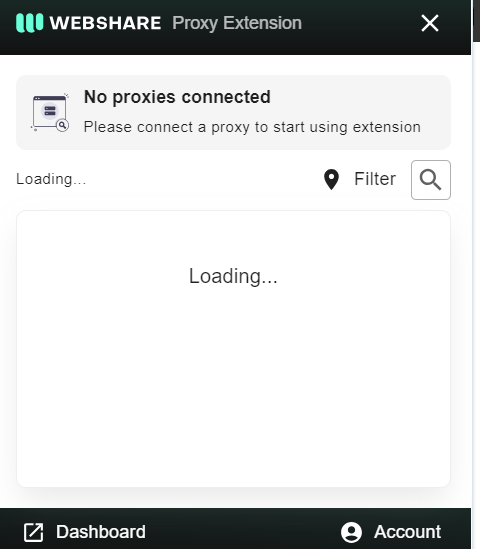
If you're a new user, you’ll find a list of 10 free proxies with flags and IP addresses indicating their geographic location. Simply click Connect next to the IP address of the proxy you want to use, and you’ll be instantly connected.
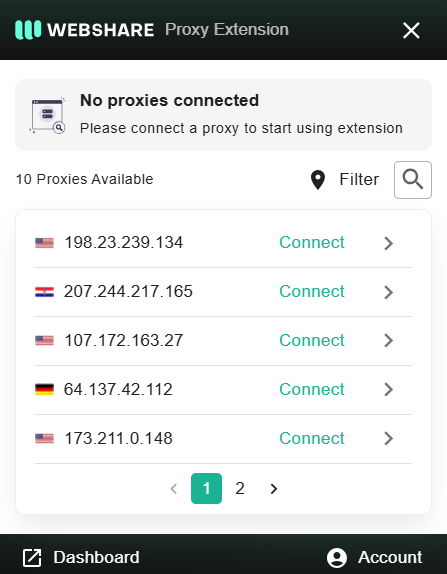
Once activated, all traffic from WhatsApp Web will be routed through the proxy.
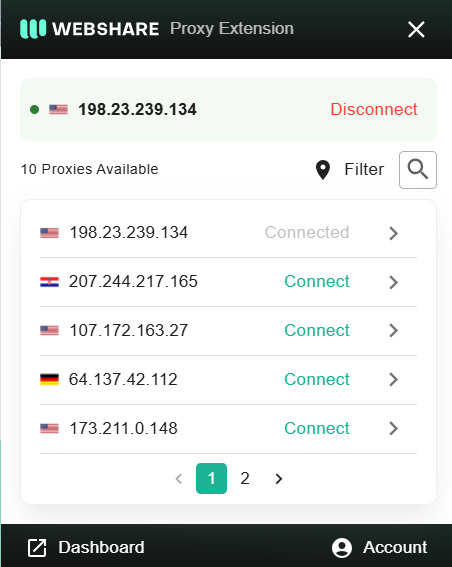
Step 5: Open WhatsApp Web
Go to web.whatsapp.com and log in to your account.
You should now be using WhatsApp Web through the proxy.
WhatsApp proxy for Android
If you want to use a proxy for WhatsApp on your Android device, you can configure it directly in your phone’s settings. Follow these steps to set up a proxy and access WhatsApp securely.
Step 1: Open Wi-Fi settings
Open the Settings app on your Android device.
Tap Connections -> Wi-Fi and connect to your preferred network.
Press the connected Wi-Fi network and click the Settings icon next to it.
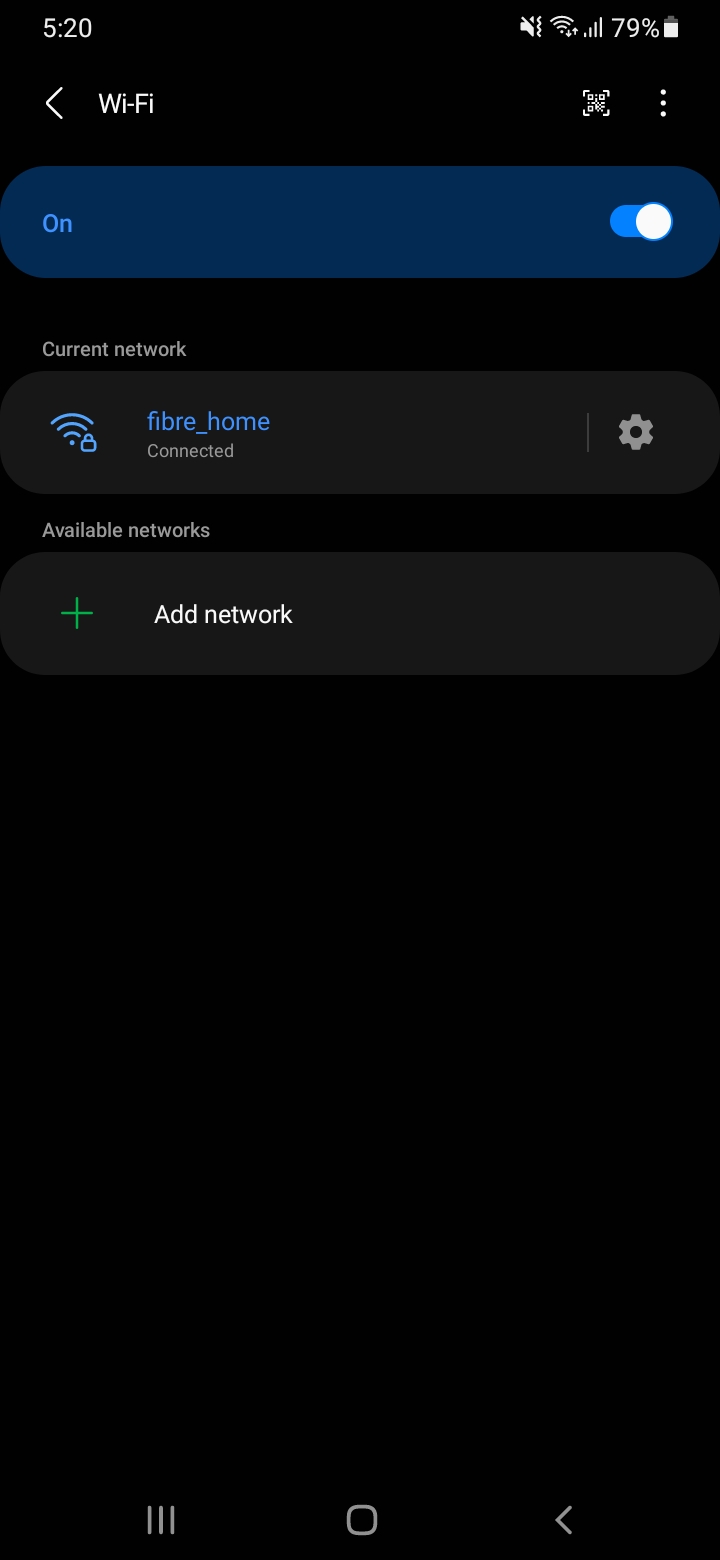
Step 2: Configure the proxy
Scroll down and tap the Advanced option.
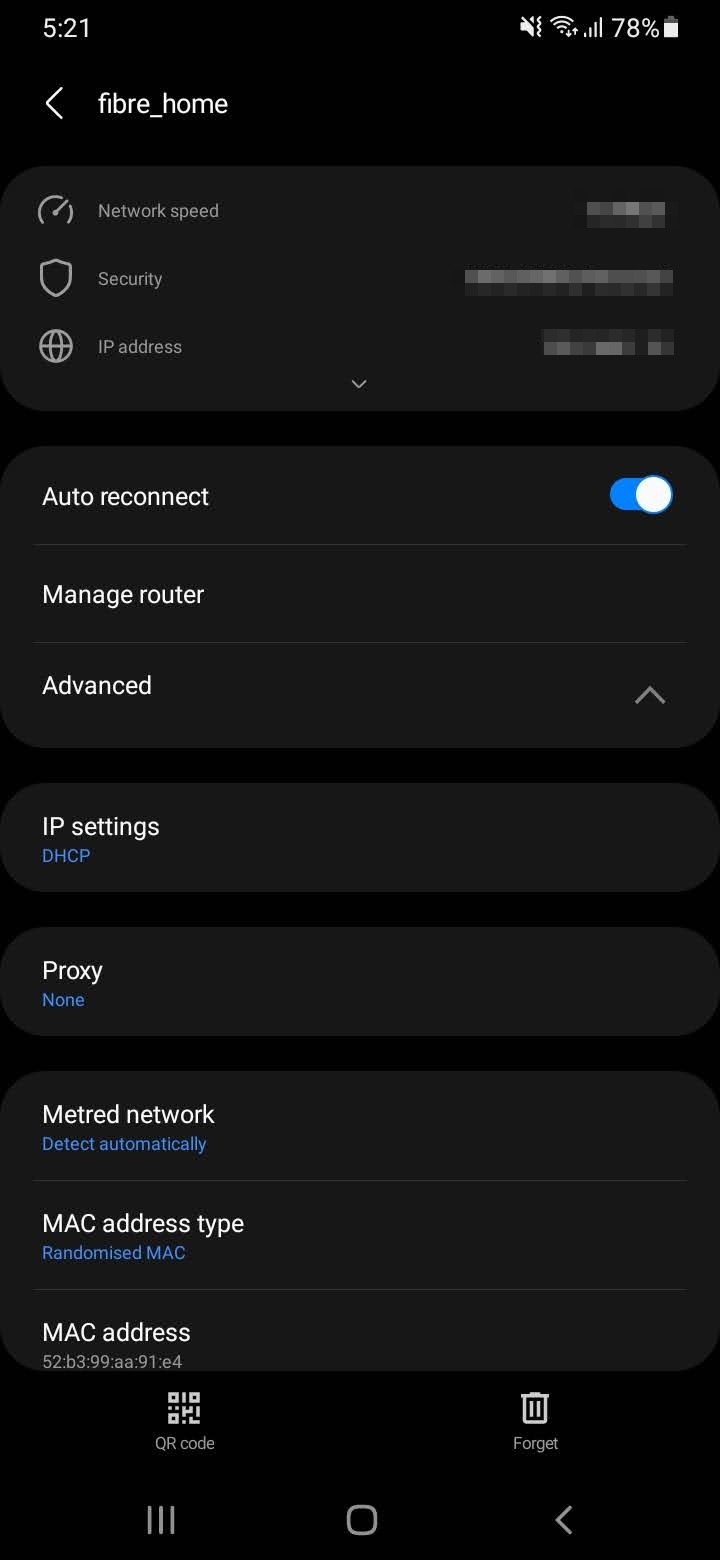
Under Proxy, select Manual.
Enter the Proxy host name (IP address) and Proxy port from your Webshare account.
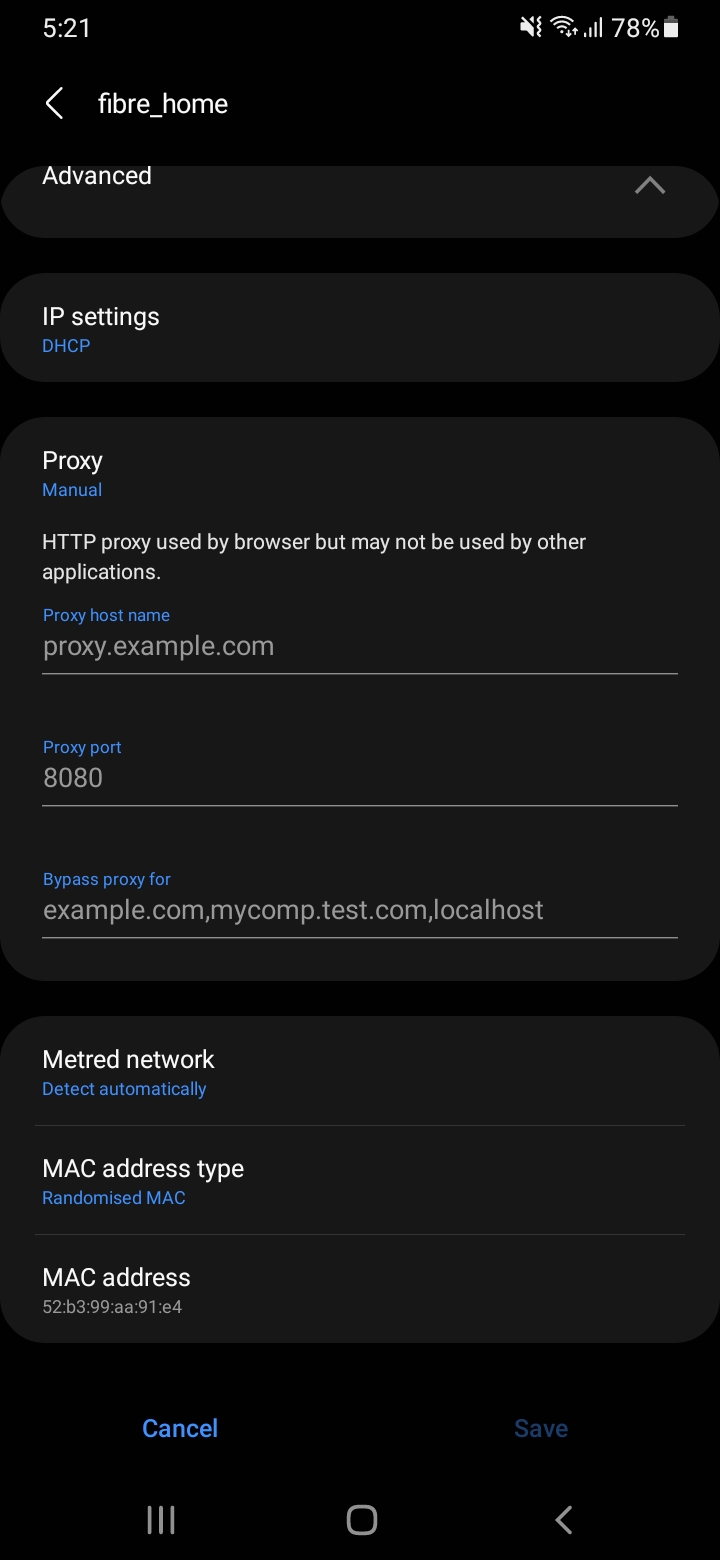
Step 3: Authenticate the proxy
As the Webshare proxy requires a username and password, Android’s built-in proxy settings do not provide a way to enter them.
On browsers, you may see a login prompt when accessing a website - that's where you should enter your proxy server's username and password. You can find these for each proxy server in your proxy dashboard.
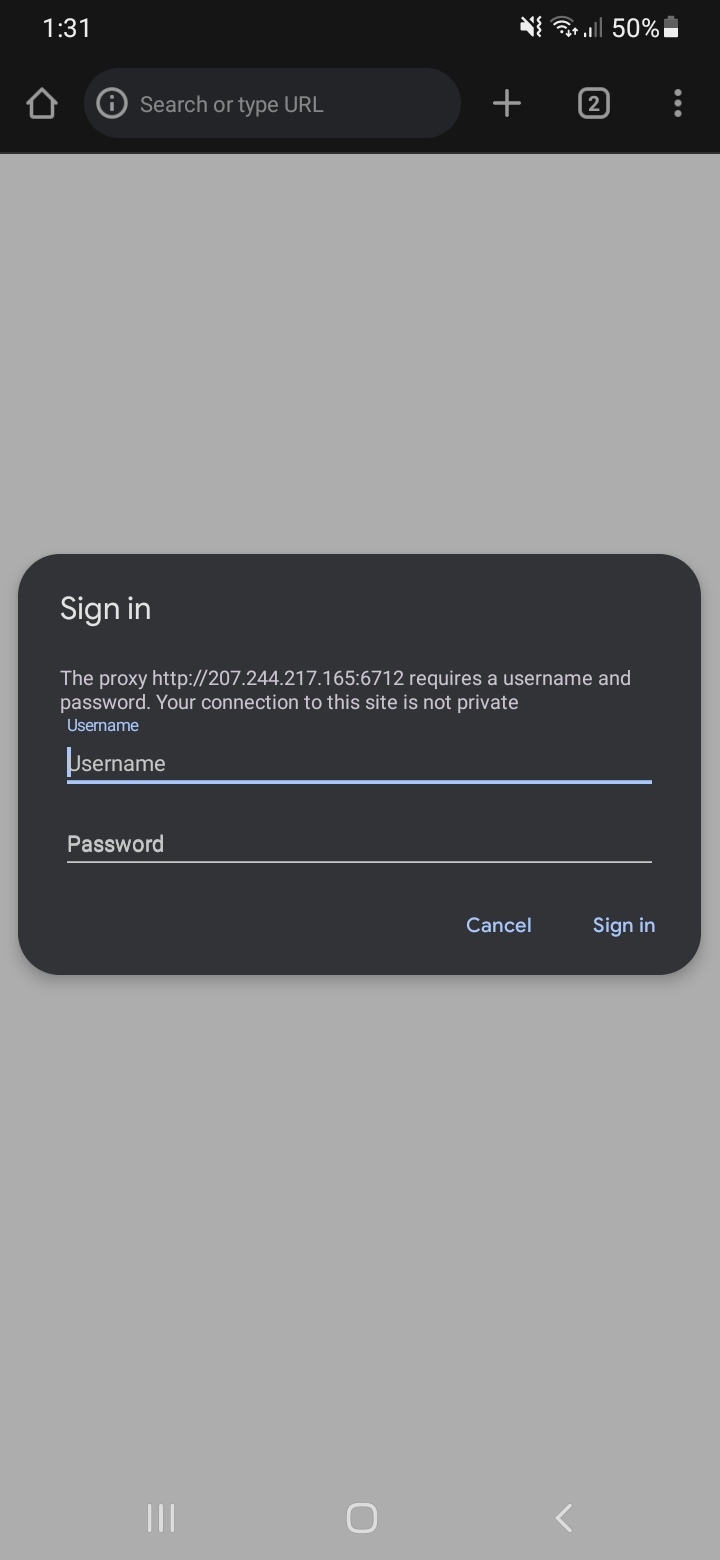
To use an authenticated proxy on Android, you’ll need a VPN app that supports proxies. Some VPN apps (like Shadowsocks) allow you to enter a proxy hostname, port, username, and password, enabling you to use the proxy without issues.
WhatsApp proxy for iPhone (iOS)
To use a proxy for WhatsApp on an iPhone, you need to configure the proxy settings within your Wi-Fi network. Follow these steps:
Step 1: Open Wi-Fi settings
Open the Settings app on your iPhone.
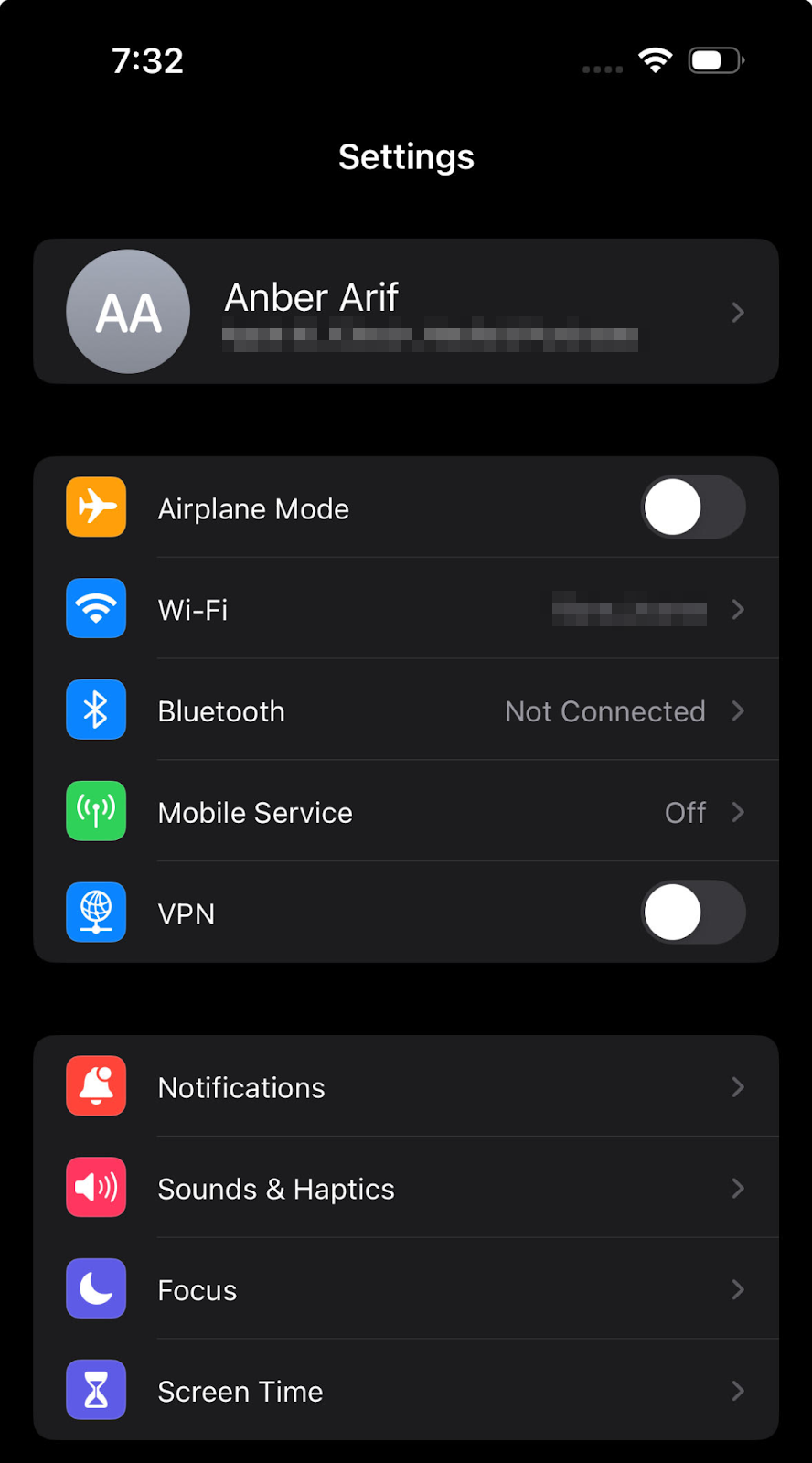
Tap Wi-Fi and connect to your preferred network.
Tap the (i) icon next to the connected network to access more options.
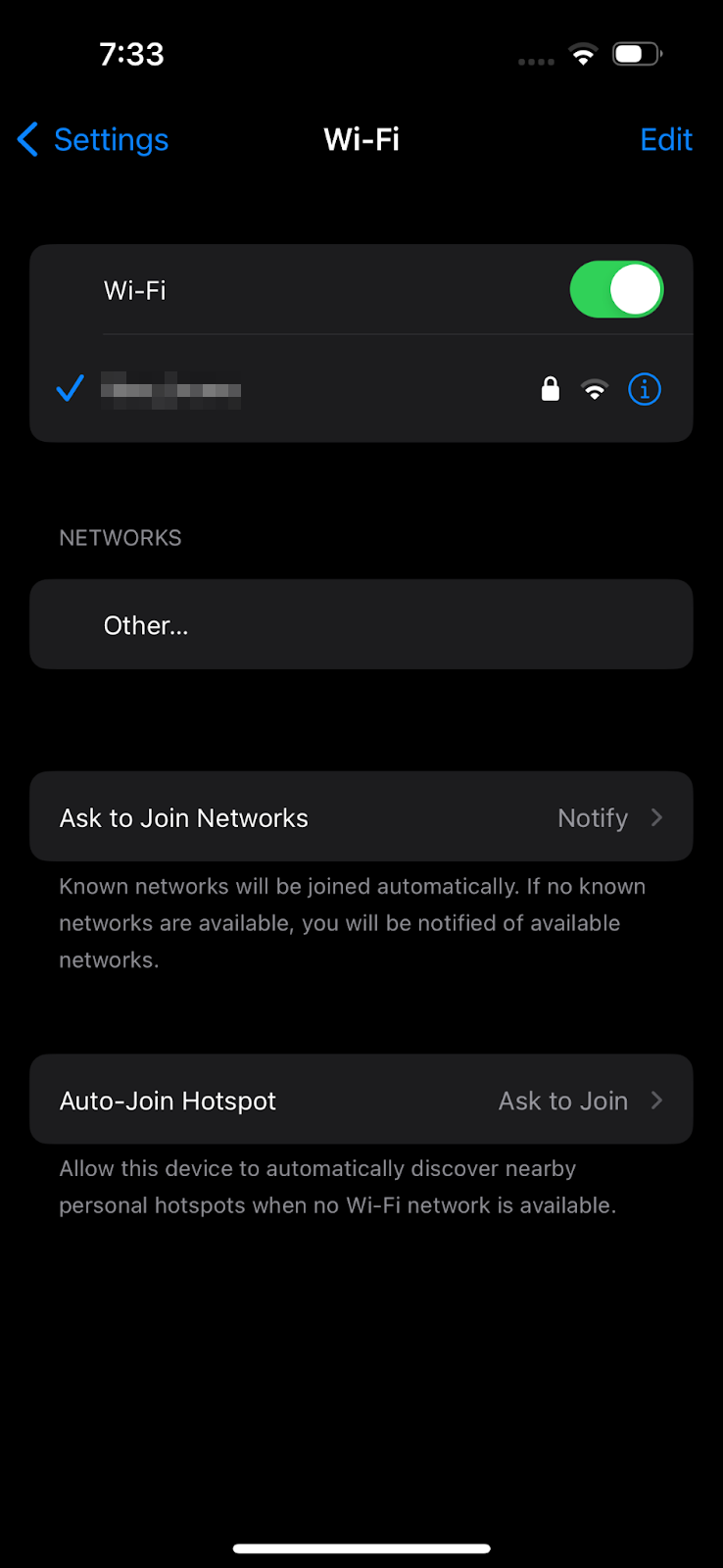
Step 2: Configure the proxy
Scroll down to HTTP Proxy.
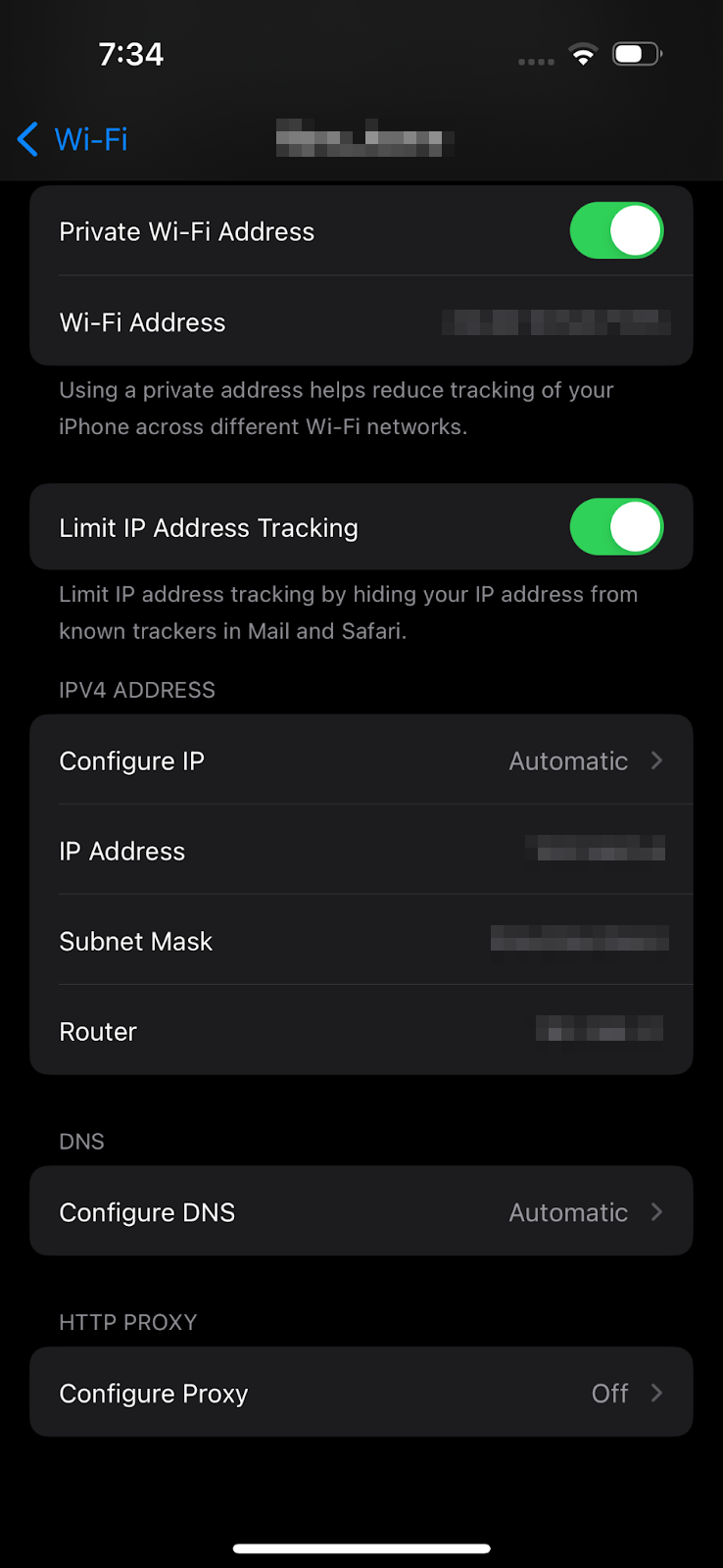
Then, select Manual.

Enter the proxy server (IP address) and port from your Webshare account.
Step 3: Authenticate the proxy
If using Username/Password Authentication, toggle the Authentication switch on, then enter the username and password provided by Webshare.
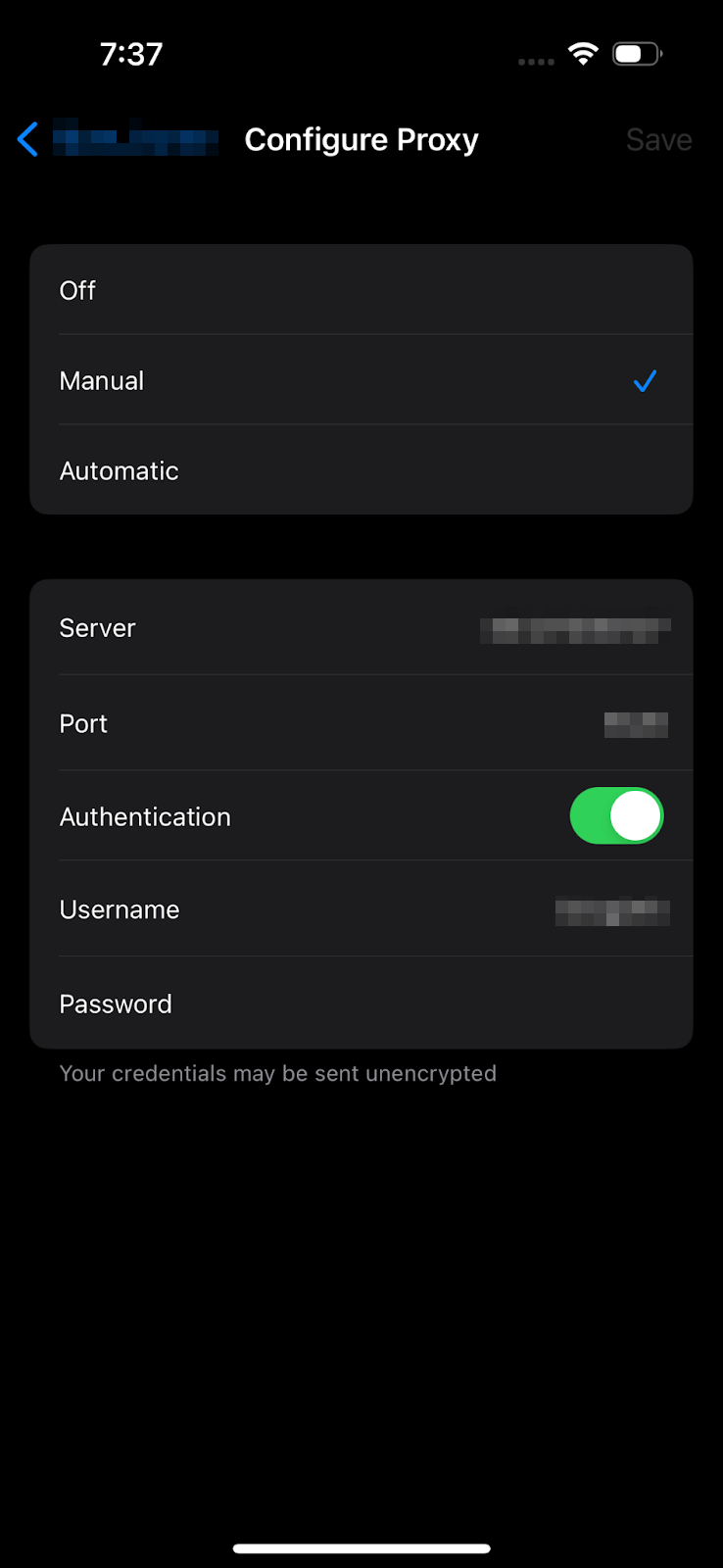
Once you’ve entered all the required details, tap Save or simply exit the menu. Your proxy will now be active for this Wi-Fi network.
How to test WhatsApp proxy?
After setting up a proxy for WhatsApp, follow these steps to ensure it's working correctly:
Check WhatsApp connectivity
- Open WhatsApp and try sending a message.
- If the message is sent successfully, the proxy is working. If it fails, there may be an issue with the proxy setup.
Verify IP address
- Open a web browser on your device and visit IPinfo.io.
- If the site shows your proxy’s IP address, your traffic is being routed through the proxy.
- If it displays your original IP, the proxy is not working correctly, and you may need to check your settings.
How to turn off WhatsApp proxy?
If you no longer need to use a proxy for WhatsApp, follow these steps to disable it on your device.
For Android
- Open Settings and go to Wi-Fi.
- Tap the icon next to your connected network.
- Scroll down to Advanced -> Proxy and select None.
- Save the settings and restart your Wi-Fi connection.
For iPhone (iOS)
- Open Settings and tap Wi-Fi.
- Tap the (i) icon next to your Wi-Fi network.
- Scroll down to HTTP Proxy and select Off.
- Save the settings and reconnect to Wi-Fi.
Confirm the proxy is disabled
- Open a browser and visit IPinfo.io.
- If it shows your original IP address instead of the proxy’s IP, the proxy has been successfully turned off.
Now, WhatsApp will connect directly to the internet without using a proxy.
What is the best proxy to use with WhatsApp?
When choosing a proxy for WhatsApp, key factors to consider include:
- Speed & Stability: A fast, low-latency proxy ensures smooth messaging and calls.
- Residential vs. Datacenter: Residential proxies are less likely to be detected and blocked, making them ideal for long-term use. Datacenter proxies are faster but more easily restricted.
- Security & Privacy: The proxy should support authentication and encryption for secure communication.
- Protocol Support: WhatsApp works best with HTTPS or SOCKS5 proxies for seamless connectivity.
All things considered dedicated datacenter proxy server or static residential proxy are the best.









